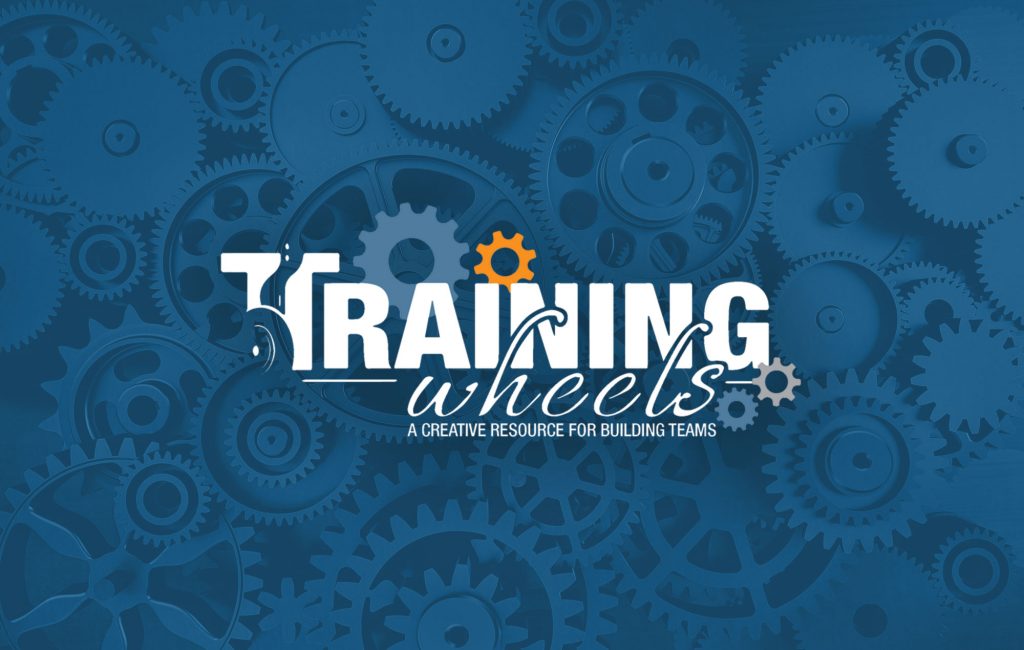
Facilitator Tip: Metaphoric Methods in Processing
Yesterday I lead a webinar in conjunction with AEE on Effective Processing Tools and Techniques. It was well attended and received great feedback from attendees! Once I have the recording available, I will share it out in next week’s newsletter. In the webinar I shared 10 different techniques for processing that enable facilitators to break out of the traditional sharing circle and mix up their debriefing methods. Debriefing activities can be just as dynamic and engaging as group initiatives- especially with a new frame of mind from facilitators and participants, that reflection is not that ‘boring thing‘ that comes at the end of the activity. It is not. It is that thing that creates the value and wonder in learning; it is the way ideas come together as a lasting lesson.
Using a variety of techniques also give more ownership of the debriefing process to the participants themselves. In the traditional sharing circle the facilitator is responsible for leading the group through the standard What, So What, Now What sequence of questions–which is a very effective method and I use it with 100% of the groups I facilitate. However, I mix up my debriefing sessions with multiple other techniques. This keeps the energy around debriefing alive and not that ‘boring thing’ we have to do after the fun stuff.
One of my favorite methods is Metaphoric processing, and my favorite tool to use is Metaphor Cards.
Metaphor Cards are reflective tools that use metaphors or symbols to represent participant‘s reactions to an experience. These cards are useful as introductory activities, for processing a specific experience, for closure, or even as tools to help participants resolve conflict.
This engaging tool uses pictorial images, metaphors or symbols to represent a participant’s or group’s reactions to an experience. Providing a tangible image upon which participants can attach their thoughts helps give these ideas substance and shape in quite profound depth. Metaphor Cards are useful as introductory activities, for processing a specific experience, for closure, or even as a tool to help participants resolve conflict. Metaphor Card Activities are appealing to participants, can be used in many different ways, and are appropriate for all age groups. Groups seem to go more in depth about their ideas and feelings when they attach their thoughts to a symbol or picture. Because participants share about a card rather than directly about themselves they are often more willing to share. Often more reserved members are drawn to expressing themselves through the use of these symbols.
Using objects, as symbolic representations of an experience, or personal attribute can be a very effective approach to processing. These activities engage participants in creating or choosing symbols representing a group success or individual strength or accomplishment. The strength of these types of activities is that they are not threatening to participants and facilitators, and leave the opportunities for creative and meaningful interpretation of an experience wide open. Participants can attach their thoughts to a tangible object that they can touch and show to a group during group discussion or take away with them to represent their experience. This helps thoughts and ideas reach depth and character in a way that doesn‘t happen with dialogue alone. Because the participants can talk about the object or image rather than about themselves directly they sometimes express thoughts that otherwise would be left unsaid (A Teachable Moment, Cain, Cummings and Stanchfield 2004). Objects and images can be used to liven up the traditional sharing circle by providing interactive, kinesthetic ways to engage participants in group dialogue.
Directions for Metaphor Cards/Chiji Cards:
As an introductory activity participants can choose the card that best represents a strength they bring to the group, or a goal they have for the day, course or program.
As a pre brief in the early parts of a program spread the cards out before the group and have them pick a card that best represents where they are at that moment. At the very beginning of the day/program, spread the cards out before the group and have them pick a card that best represents where they are at that moment. Ask them how they are feeling and to pick a card that matches where they are mentally coming into the day. Go around the group and ask each participant to share why they picked the card they did and why that card represents them or where they are. If you start the day with this activity, it is good to end the day with this same activity.
Spread the cards out before the group and have them pick a card that best represents an experience or a feeling that they had during the activity or at the end of the day. You can do this at the end of the day or after an activity. Go around the group and ask each participant to share why they picked the card they did and why that card represents them or an experience they have had. Participants can each pick their own card, then draw it or write about in their journal.

Founder / Facilitator / Big Wheel of Training Wheels